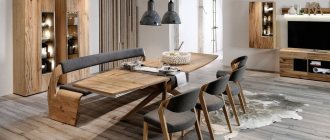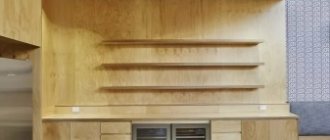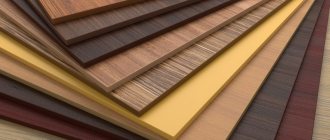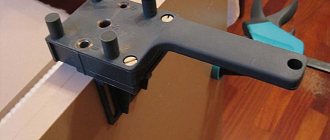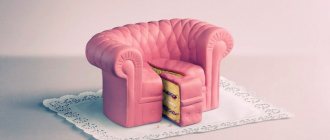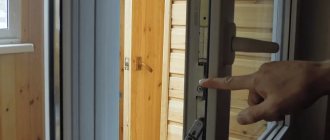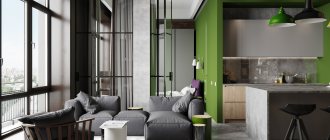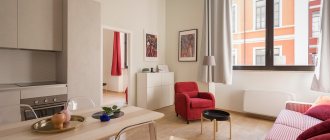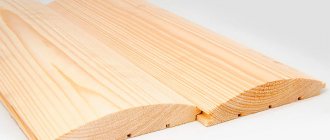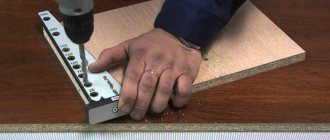Content:
- Production Features
- What is the difference between a solid-lamella furniture panel and a spliced one?
- Advantages
- Main settings
- Varieties
- What is common and what is the difference between furniture board, plywood and chipboard
- Storage conditions
A furniture panel is a composite material made by gluing together individual bars selected in size, color and texture. The production technology makes it possible to neutralize internal stresses in the material and reduce the risk of deformation during operation. Glued solids serve as the basis for wooden structures (doors, window sills, stairs) and are used in finishing, decorating residential premises, making furniture, etc.
What sizes are there?
Furniture panels can be made to order. But there are standard sizes of furniture boards. Widths vary from 200, 300, 400 mm and up to 1200 mm. The length of the slabs can be from 1000 to 3000 mm. The thickness of the material starts from 14 mm and ends at 50 mm. Permissible deviations in size: thickness +0.2 mm, width +1 mm, length +1 mm.
Production Features
Plastic, soft pine and spruce wood is considered the most suitable for making furniture panels. It is easy to process, sand, has warm, natural shades, and long fibers.
Blanks of the given parameters are trimmed, defects are removed, dried to a moisture content of 10%, then cut into bars and planed on 4 sides.
The prepared lamellas are sent to the tenon cutting line, onto which a waterproof, formaldehyde-free adhesive is then applied. The use of special technology makes it possible to glue different elements under the influence of high temperatures and pressure, creating reliable connections with almost invisible joints.
At the final stage, the wooden board is sanded to obtain a perfectly smooth surface, then packed in thermal protective film.
Overview of species
Furniture panels are not a veneered material, they are made from bars and have a natural oak texture. They can be classified by quality, manufacturing method, and color scheme. Sometimes products are divided according to the location of specific tree varieties, for example, European cognac, Far Eastern or Caucasian oak shield.
The color palette of this plant is diverse - from almost white to a noble dark shade. But the amazing milky white or ash white tones of furniture are deceiving. Oak produces such wood only when it is young. Immature trees are not used in the wood processing industry, so special chemical technologies are applied to the wood, which produces beautiful bleached oak.
Designers often use boards with shades of Sonoma oak; it is also classified as a light type.
The industry provides a large selection of furniture fabrics in golden, sand colors, close to the natural straw shade. This category of color palette includes types such as “Golden Oak”, “Rustical”, “Sedan”.
Dark varieties of oak surfaces look especially noble. They are achieved in three ways.
- The first of them is natural. An amazing variety of oak, “Cognac,” grows in Europe, which has natural luxurious dark wood.
- Artificial saturation of tonality is obtained by thermal treatment.
- By staining they achieve the rarest chestnut, chocolate and other shades.
Oak panels are also available in a variety of gray and classic brown shades.
Quality classification has its own nuances. The classification of product grades is indicated by only three letters A, B and C, but by combining them, you can obtain information about many grades of materials.
- Grade A refers to high quality products, where there is absolutely no defects, the structure and color of the fiber are taken into account. The canvas is a harmonious surface with a complete match of shades and patterns.
- Grade B is inferior in quality to the first type and refers to spliced lamellas. The same tonality of the pattern is maintained, but small cracks are allowed, sealed with special putty.
- Grade C is of low quality; traces of knots and cracks may be visible on the surface. It costs less than the two previous types and is not suitable for facade parts of structures.
It should be noted that products go on sale marked with two letters at once, each of which carries information about both sides of the shield . This applies to all-lamella material. In the designations of spliced panels, the letter “C” is added to the two main letters in front. Therefore, finished products may have a classification, for example, “AA”, “AB” or “SVV” and other similar options.
Shields have different gluing technologies. The lamellas from which the shields are made have a small width - from 20 to 120 mm. This helps to cope with the internal tension of the wood and, as a result, its deformation.
The technology for gluing wooden plates has two varieties - spliced and solid-lamella.
Spliced
This type of production involves gluing the lamellas together into a single sheet along the length and width, that is, on four sides. The length of the blanks ranges from 200 to 500 mm, and the width is classified as “narrow” (20 mm) and “standard” (40-50 mm). The production of narrow lamellas uses waste material left over from the production of solid lamella panels. Despite the high consumption of glue and a more painstaking assembly procedure, the products have a lower cost than standard options.
Standard spliced technology involves the use of larger workpieces. They are glued together and pressed under pressure. Unlike solid-lamella products, which look monolithic, the fabric assembled using the spliced method looks like a parquet floor. The large amount of glue used in the production of finger-joint panels makes the product incredibly durable. Kitchen countertops made from this material can last for many years. But flights of stairs made from laminated planks will not look attractive; they will require a more holistic structure, which can be obtained using a one-piece gluing method.
Solid lamella
In contrast to the spliced method, in all-lamella production, larger blanks are used, which are glued together on both sides (along the entire length) and then sent to the press. An ideally selected pattern creates the integrity of the appearance of the canvas. The length of the stripes depends on the size of the shield, and the width comes in different types:
- standard – 40-50 mm;
- wide – from 60 to 120 mm.
Selected wood material is used for solid-lamella production, and its remains are used for the production of finger-jointed panels. Therefore, the cost of the first option is noticeably higher than the second. The price of spliced fabric is set per cubic meter, regardless of the length of the product.
In the case of a solid-lamella panel, the cost of the product is affected by its length: the longer it is, the more expensive the panel.
Advantages of panels made of wooden lamellas (bars)
- aesthetic appearance of finished structures;
- environmental friendliness of products;
- unpretentiousness in processing (grinding and trimming);
- unlimited possibilities for implementing design ideas;
- the natural pattern (texture) on the product is preserved;
- lamellas glued into a single structure have high resistance to mechanical damage;
- the shields are not at risk of deformation and shrinkage.
In furniture production today there is no alternative to wooden panels - they are irreplaceable.
Manufacturing technology of edge-glued (parquet) and solid-lamella (solid) furniture panels
At the first stage, raw lumber is sent to drying chambers, where its moisture content is adjusted to approximately 6-10%. This indicator is ideal for gluing furniture panel slats. Dry blanks are cut into a block, where they are removed from unevenness, hairiness and any flaws in the edged lumber.
Next, the parts are connected by end or end and side parts, for which cutting micro-spikes and grooves is used, onto which glue is applied. Gluing of furniture blanks is carried out under pressure in special clamps. Then the spliced lamellas are sent to a thickness planer, where they are processed on both sides. Finished panels are sanded and packaged in shrink film.
What is the difference between a solid-lamella furniture panel and a spliced one?
The main difference between these two types lies in the way the lamellas are connected:
- solid-lamella is a laminated array of solid bars, the length of which corresponds to the length of the shield;
- jointed is obtained by connecting small lamellas at the sides and ends, which is why it is often called “parquet”.
Solid lamella panels imitate the homogeneous structure of natural wood, unlike finger-jointed ones, they are less resistant to deformation. This fact is explained by the presence of a larger number of glued joints, which neutralize mechanical stresses in the material.
We are ready to produce the following types of shields:
- solid EXTRA made from 40 mm bars - an elite and most expensive material;
- one-piece EXTRA SANDWICH made of two panels 20+20mm - the material is clean on both sides;
- one-piece EXTRA/BC SANDWICH - two panels 20+20 II - bottom with defects and top clean;
- solid AB from a 40 mm bar - bitches and sapwood are allowed;
- solid SANDWICH AB - two panels 20+20 mm - material on both sides with live skeins and possibly sapwood;
- solid SANDWICH AB/BC - two panels 20+20 mm - bottom with defects, top - live knots;
- one-piece aircraft;
- spliced EXTRA;
- spliced SANDWICH EXTRA / BC;
- fused AB;
- spliced aircraft;
Advantages
One of the main advantages of pine furniture board is its low humidity. Drying individual small lamellas allows you to quickly achieve high-quality results. The absence of a solid, unidirectional fiber structure, like a natural solid, prevents the formation of cracks along the entire length of the material.
The monolithic structure of the laminated board is highly durable, as it consists of individual lamellas, the fibers of which are located in different directions. Due to this, there are no internal stresses in the thickness of the material, which allows minimizing shrinkage deformations.
In addition, laminated pine has better anti-corrosion protection and moisture resistance than solid wood. It is quite difficult to thoroughly process a solid mass, because protective agents do not penetrate deeply into the material. The structure of the furniture board consists of small processed lamellas connected with waterproof glue, which serves as additional protection against moisture penetration.
The use of glued panels allows you to cover a significant area in a short time - with a thickness of 18 mm, the material can be 3 m long and 80 cm wide. It is difficult to produce a solid wooden slab of this size, and its cost will be much higher.
Facing
Furniture panels are used not only for finishing, but also for the construction of walls and ceilings. They give the structure the necessary rigidity. Due to their high strength, boards are used for cladding; panels and ceilings are made from them.
Varieties
According to GOST 2140 - 71, laminated boards are divided into 4 grades: “Extra”, “A”, “B”, “C”. Among which “Extra” is the most expensive and high-quality, “C” is the cheapest with an unlimited number of defects. The marking indicates the grade of both sides of the product. “Intermediate” varieties of the “A/B” type are popular, which have good technical characteristics and are affordable. When choosing a furniture panel, you need to inspect its front surface (the so-called best side of the product) and compare the identified defects with the data given in the table:
| List of wood defects and processing according to GOST | Variety | ||
| "Extra" | "A" | "IN" | |
| Healthy light and dark knots, including those with cracks | Not allowed | Only healthy knots with a diameter of no more than 6 mm are allowed | Knots with a diameter of up to 15 mm are allowed |
| Rotten, falling out branches | Not allowed | Not allowed | The diameter of the knots should not exceed 6 mm and should be sealed with putty of an identical shade |
| Tar spots and streaks | Allowed | Allowed | Allowed |
| Core | Not allowed | Not allowed | Not allowed |
| Non-through cracks | The size of cracks on the front side of the shield should be no more than 0.5x50 mm; within 5% of the lot | The permissible size of cracks on the front side is no more than 0.5x100 mm; within 5% of the lot | The size of cracks should not exceed 1.5x150 mm |
| Sineva | Not allowed | Not allowed | Allowed |
| Machining defects | Not allowed | No more than 1 defect is allowed per 1 m2 of the front side of the board, size 3x5 mm, depth up to 1 mm | No more than 1 defect is allowed per 1 m2 of the front side of the board, size 5x10 mm, depth up to 3 mm |
| Neprostrog | Not allowed | Not allowed | Not allowed |
Types of oak panels we produce
Prices for oak panels depend on their grade. The grade is determined by two sides and can be of the following types: A/A or EXTRA, AB, AB/C, BC.
- EXTRA grade – selected according to pattern, even in tone, uniform in texture, without defects.
- Grade AB - without selection for pattern, even in tone, uniform in texture, live knots and sapwood are allowed. Repair with putty is possible.
- Grade BC - without selection for pattern, tone and texture, defects that were not included in the previous two grades (black bitches, sapwood, back bark), repair with putty.
What is common and what is the difference between furniture board, plywood and chipboard
Despite the fact that all these materials are products of processing natural wood, each of them has fundamental differences that you need to know about.
Chipboard is a durable, moisture-resistant, cost-effective material with poor air permeability. It is produced by pressing sawdust and wood shavings, therefore it has a loose structure and a short service life (no more than 10 years). The presence of toxic formaldehyde resins in the composition limits the scope of application of the material. High-quality furniture board has many advantages compared to chipboard, including:
- environmental Safety;
- durability;
- easy threading;
- possibility of restoration.
Plywood is a lightweight, durable, inexpensive material that is resistant to bending and compression. Unlike glued panels, it lends itself well to heat treatment, which allows you to create the most bizarre shapes. Produced by gluing 3 or more sheets of veneer. Plywood cannot be processed like natural wood - its leaf structure will be exposed. In addition, the material is capable of warping and swelling with changes in temperature and humidity, which is not typical for furniture boards.
Natural material
Essentially, a furniture panel is a polished wooden board made of any wood. A kind of semi-finished product from which the vast majority of wood products are made - from furniture to small decorative items. They serve for a long time, attract attention, create comfort at home and do not break at the first blow. It is believed that furniture board, due to its environmental friendliness, even has a positive effect on the human body, remaining safe for both children and animals.
Now construction stores offer many analogues of wooden panels, such as chipboard or MDF. But they do not have the same list of advantages as a shield, namely:
- Environmental friendliness;
- Safety;
- Aesthetic appeal;
- Strength
- Possibility of restoration;
- Long term.
Features of application
The choice of furniture panel is related to its future use. The noble texture of solid-lamella slabs is used in interior decoration, the manufacture of stair steps, and doors.
When choosing laminated wood as a finishing material, you need to pay attention to the shape of the lamella pattern. With a radial cut, the fibers are arranged longitudinally, and with a tangential cut, they resemble diverging from the center of a circle.
It is necessary to use furniture board for interior decoration if the humidity of the room does not exceed the norm and the temperature does not fall below 50C.
It is not recommended to cover the finished finish with glossy varnish - it can highlight the seams.
Finger-joined slabs are used in covering surfaces hidden from view, in the manufacture of risers, and stair frames.
Durability, a wide dimensional grid, and reasonable cost make laminated wood indispensable in furniture production. Wardrobes, chests of drawers, bedroom sets, etc. are made from it.
Despite the low humidity level, wooden panels exhibit slight shrinkage, which must be taken into account during installation.
Where is it used?
The use of furniture panels has gained popularity in the creation of countertops and tables, as well as cabinets and kitchen facades. In structure they are close to wood. Products can be carved and milled. From thin shields you can make a beautiful carved screen for radiators or a screen.
Thick ones are suitable for making steps for stairs, window sills, shelving and storage systems. The use of the material is no less in demand in the field of interior decoration. The unusual pattern and structure of the spliced material, which resembles parquet, was used here.
Floors with this type of finish can be varnished, waxed and treated with impregnations. Finishing walls or creating partitions can also be done using furniture panels. If you need to make durable and soundproofing ceilings, such glued boards are perfect. Taking into account the recommendations given in the article, you can easily cope with the task of choosing the most suitable material for making interior items or finishing rooms.
